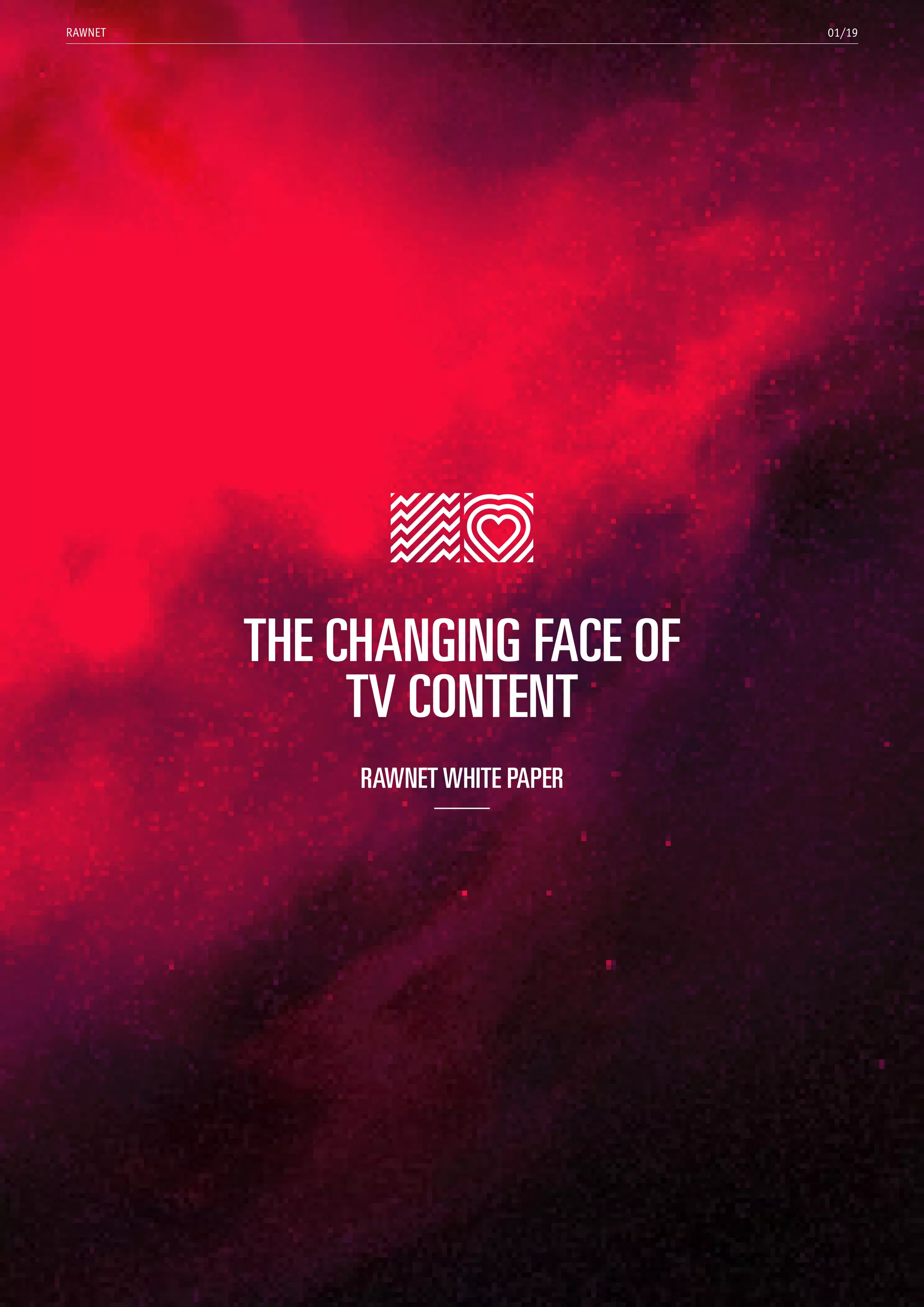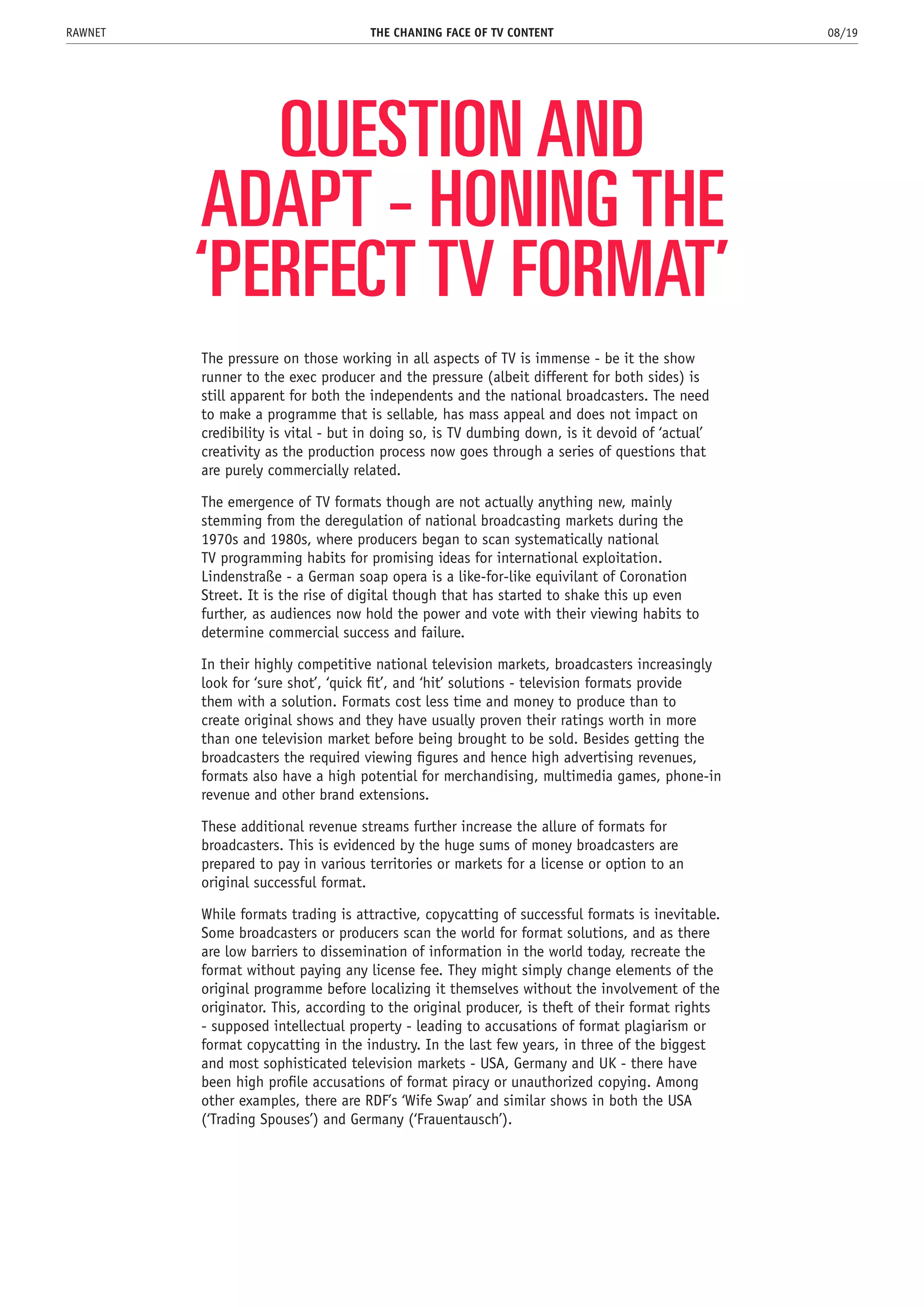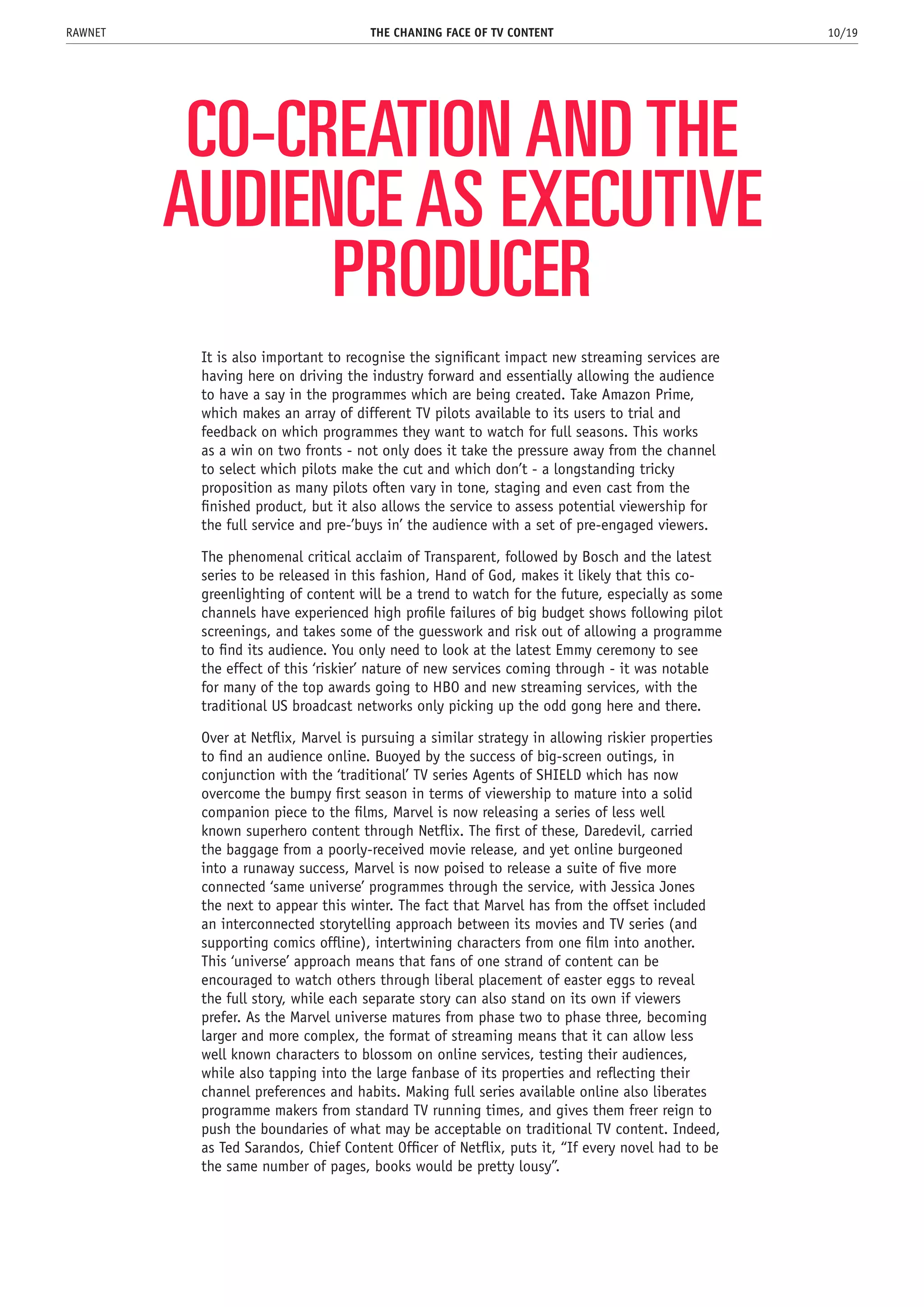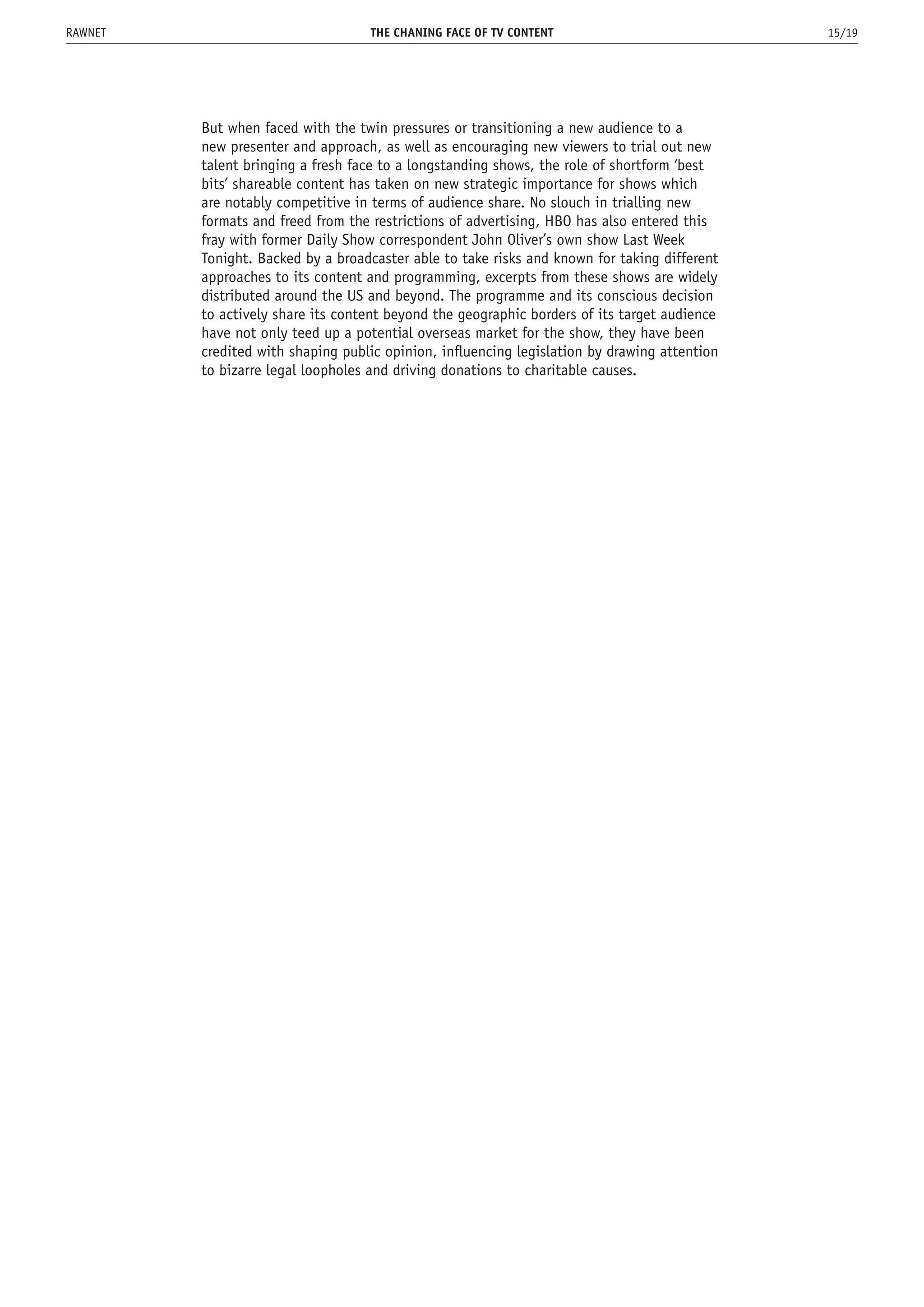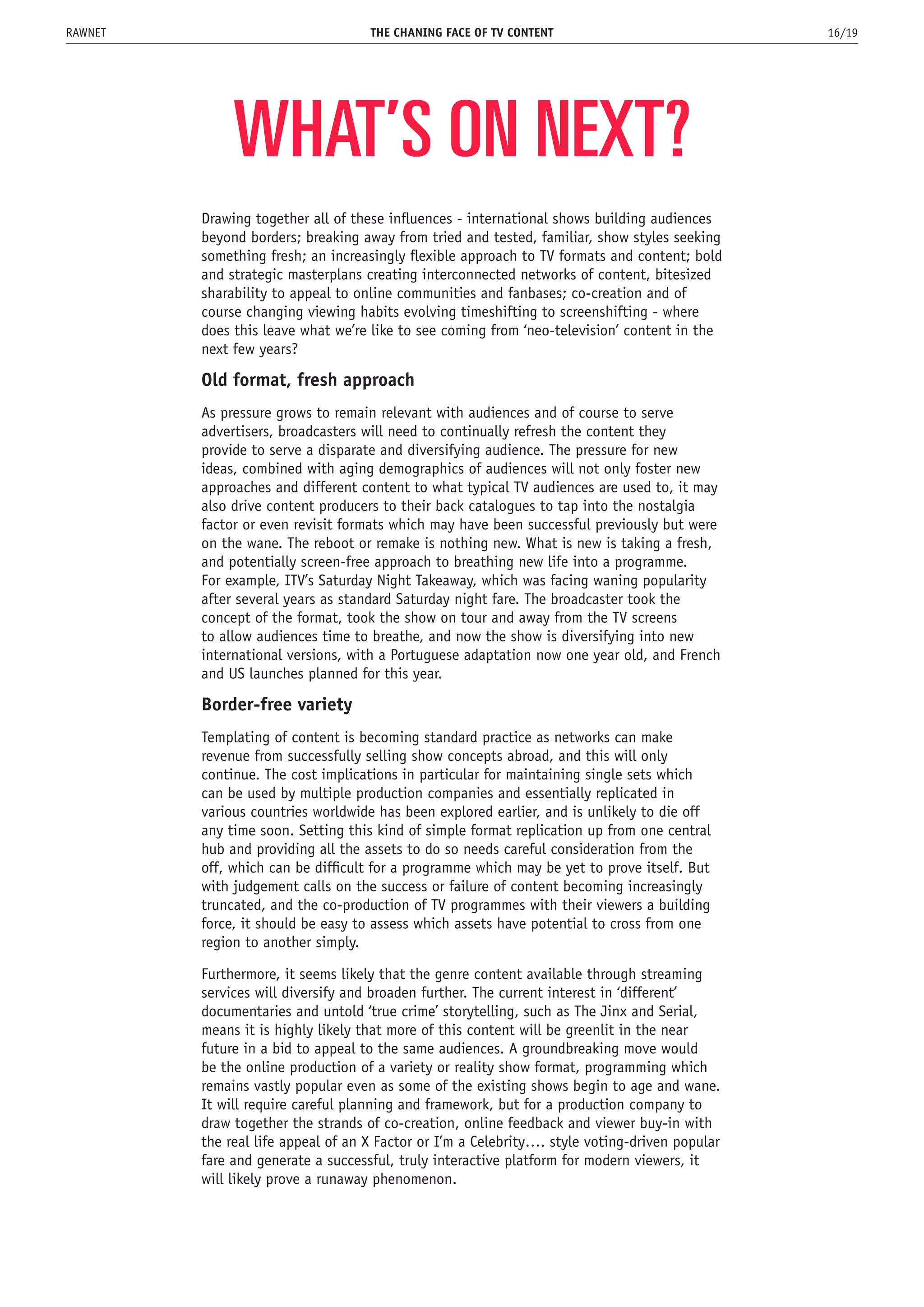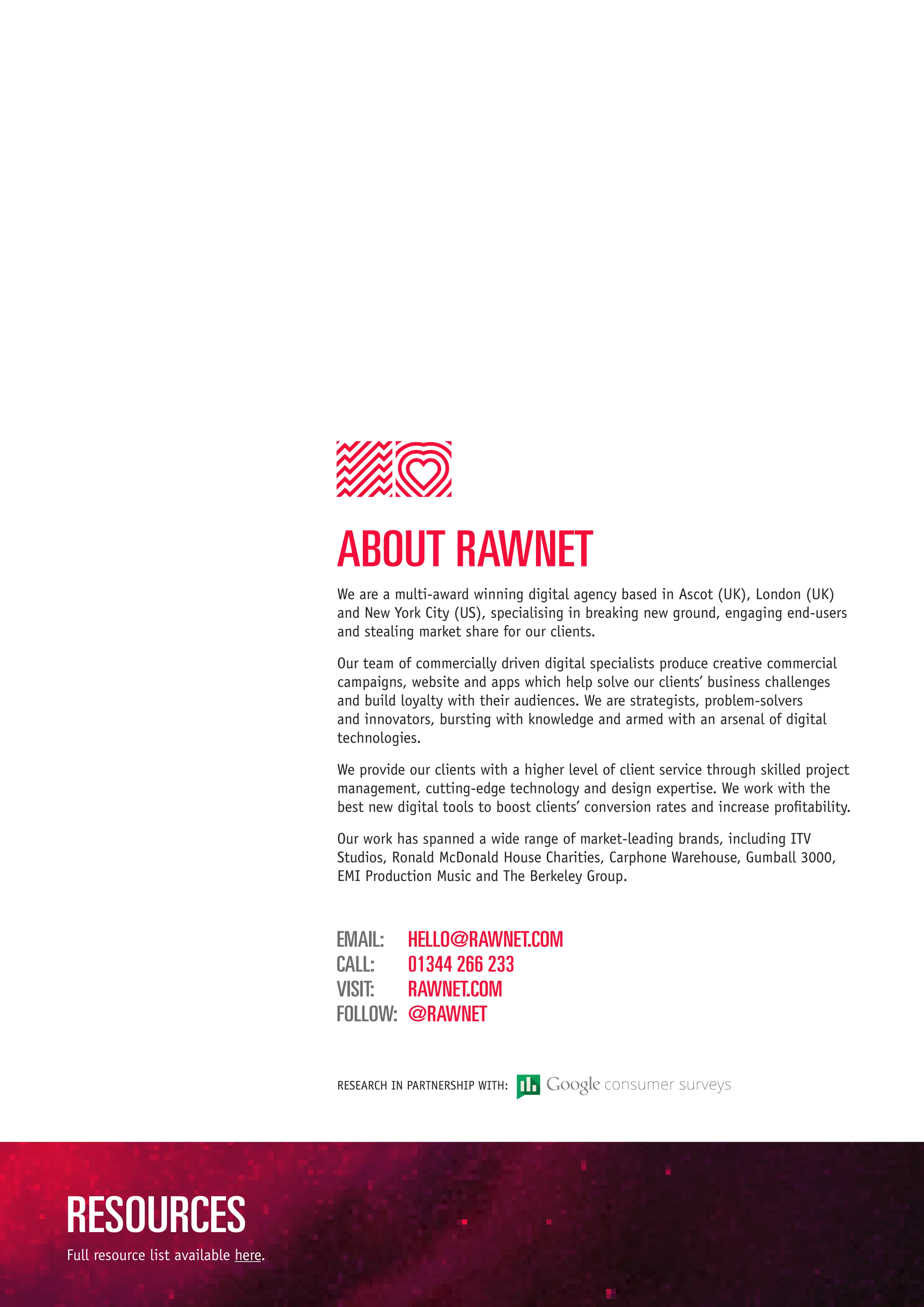The document discusses how digital technologies and data are transforming television content. Broadcasters are embracing digital platforms to grow audiences through live-tweeting, additional online content, and making their content more trackable and measurable. Formats are also changing as audiences expect to access content anywhere on connected devices. Successful shows are being adapted globally through co-productions and alliances between broadcasters. However, broadcasters must balance the demands of real-time audiences with their responsibilities as news providers.
